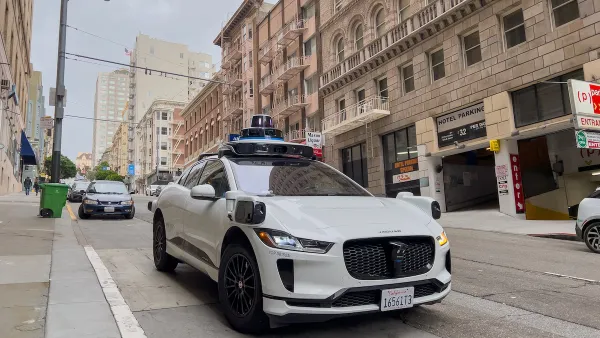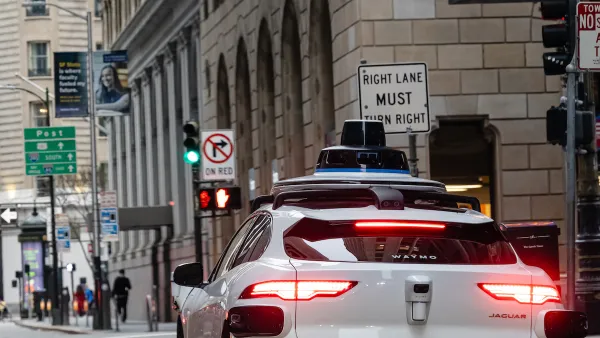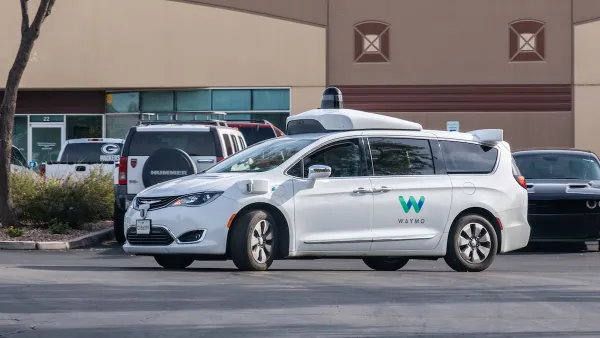While some driverless car companies have expanded operations in the past month, some industry observers caution that the business of autonomous vehicles remains stuck in neutral.
On April 7, the California Department of Motor Vehicles (CA DMV) issued a permit to Nuro "authorizing the company to test two driverless vehicles on surface streets within specific, designated parts of Santa Clara and San Mateo counties [in Northern California]," according to a CA DMV press release. Chris Teale reports the news of Nuro's new driverless presence on the streets of the Bay Area.
Nuro expanded driverless operations in Texas at the end of the year, testing driverless delivery services for Walmart. But when surveying the larger landscape of the industry, the company's latest advancements don't necessarily indicate that the coronavirus pandemic is accelerating the adoption of autonomous vehicles technology. The developments for the autonomous vehicle industry during the pandemic has been a mixed bag of good news and bad.
On one hand, Nuro isn't alone in getting a chance to expand its testing of autonomous vehicles operations in the last month of public health and economic crisis. The NAVYA project's autonomous vehicles were already testing in Florida, but the coronavirus has offered a chance for that company to expand operations to deliver medical supplies at the Mayo Clinic in Jacksonville, according to an article by Sebastian Blanco. Also, numerous writers have taken the temperature of the industry and read the crisis as an opportunity for autonomous vehicle technology. Here's a sample:
- Self-driving cars proving helpful during coronavirus lockdowns (Motor Authority, April 8, 2020)
- It took a coronavirus outbreak for self-driving cars to become more appealing (Mashable, April 1, 2020)
- Despite setbacks, coronavirus could hasten the adoption of autonomous vehicles and delivery robots (VentureBeat, March 20, 2020)
On the other hand, Waymo suspended its operation of autonomous vehicles at the outset of the crisis in March. An article by Joann Muller offers an opposing position to those expressed in the articles listed above, writing that the coronavirus has further revealed the lack of a viable business model for driverless technology.
FULL STORY: Coronavirus puts ambitious plans for self-driving cars on the shelf

Analysis: Cybertruck Fatality Rate Far Exceeds That of Ford Pinto
The Tesla Cybertruck was recalled seven times last year.

National Parks Layoffs Will Cause Communities to Lose Billions
Thousands of essential park workers were laid off this week, just before the busy spring break season.

Retro-silient?: America’s First “Eco-burb,” The Woodlands Turns 50
A master-planned community north of Houston offers lessons on green infrastructure and resilient design, but falls short of its founder’s lofty affordability and walkability goals.

Test News Post 1
This is a summary

Analysis: Cybertruck Fatality Rate Far Exceeds That of Ford Pinto
The Tesla Cybertruck was recalled seven times last year.

Test News Headline 46
Test for the image on the front page.
Urban Design for Planners 1: Software Tools
This six-course series explores essential urban design concepts using open source software and equips planners with the tools they need to participate fully in the urban design process.
Planning for Universal Design
Learn the tools for implementing Universal Design in planning regulations.
EMC Planning Group, Inc.
Planetizen
Planetizen
Mpact (formerly Rail~Volution)
Great Falls Development Authority, Inc.
HUDs Office of Policy Development and Research
NYU Wagner Graduate School of Public Service




























